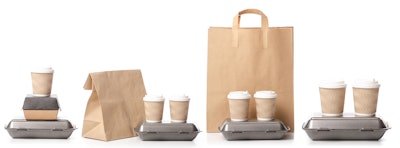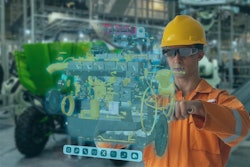
Packaging is an integral component of the food and beverage industry. It assists in preventing waste and ensuring that the food retains its desired quality throughout its shelf life. Packaging also has structural (packaging material, shape and size), graphical (colors, labels and symbols) and verbal (textual information) attributes, which leads to the interaction between food packaging and consumers.
The Coronavirus disease (COVID-19) pandemic could not affect the food packaging industry significantly. While the disposable plastic (a key packaging material) is considered unsustainable and is assumed to carry harmful bacteria, the pandemic stressed the need for hygienic packaging to protect food from germs and extend its shelf life during this time.
Impacts of food packaging on environment
According to the U.S. Environmental Protection Agency (EPA), food and food packaging materials constitute almost half of the entire municipal solid waste. Unfortunately, most food packaging types are made to be used only once, and thereafter, are thrown away as they cannot be reused or recycled. This is because packaging is regarded as somewhat unnecessary to the end consumers, especially in the case of food, as by the time it reaches them, its purpose is almost served.
When the packaging is discarded, it is either sent to a landfill or ends as a waste. At time these are carried along by wind and water into the environment. Conventional food packaging materials involve the use of metals, paper, glass and plastics. Packaging sent to landfills, especially those made from plastics, take a lot of time to degrade, and when burnt, release toxins. Over 40% of the global production of plastic is used for food packaging, while the recycling rate of the same is less than 5%.
Also, the chemicals from the packaging materials trickle down into groundwater and soil. Other than this, packaging materials, which are heated along with the food, can transfer non-food harmful substances to the main food product. This calls for a need to opt for sustainable food packaging solutions.
Sustainable packaging refers to the development and use of packaging solutions with minimal environmental impact and ecological footprint. Materials used in the packaging should be renewable, recyclable, recycled, reduced and redesigned to be termed sustainable. The selection of material varies with the functions that the package is supposed to fulfill.
Government support and initiatives driving the industry
A shift in consumer preferences across the globe toward recyclable and eco-friendly materials and government initiatives and support for the same has led to the growth of sustainable packaging solutions in the food industry. Some of the developed countries/regions are introducing regulations to implement sustainability in food packaging, while some are still functioning as per status quo, with very limited or no regulations. Regulatory authorities across the globe are adopting strategies to minimize and manage packaging waste. In the United States, all food packaging is heavily regulated by the U.S. Food and Drug Administration (FDA), which controls what types of materials can be used for packaging food and ensures that packaging materials are compliant with regulations imposed by the EPA. A directive by European Union regulates the chemicals and heavy metals present in packaging. The Food Safety and Standards Authority of India (FSSAI) prescribes a specific migration limit for certain contaminants in plastic packaging materials.
Fast-moving consumer goods (FMCG) companies and other stakeholders are proactively taking steps to reconsider their packaging process/materials, to improve the sustainability of their packaging. Large food corporations generate the maximum plastic waste and have separate targets/plans to reduce and manage the same.
Next-generation food packaging technologies
The other key highlights of the food packaging space are active and intelligent packaging and novel packaging. Active packaging extends the shelf life of the food product and assists in maintaining or improving its quality. This involves the use of scavenging and absorbents, active emitters, and antimicrobial agents, among others. On the other hand, intelligent packaging promotes tracking and communication of food quality throughout the supply chain using sensors, radio frequency identifications (RFIDs), barcodes, freshness indicators and leak indicators. These innovations have a substantial opportunity to integrate with other technologies.
There are other novel food packaging technologies that recently emerged. These include some edible films and coatings to form a thin layer of material coating on food to extend its shelf life. Another technology is vacuum skin packaging, which is done to the exact shape of the food to prevent microbiological deterioration. Another key technology getting popular is nanotechnology in food packaging, which involves nanosized materials to detect pathogens and provide antimicrobial barriers.
Bioplastic is another sustainable material emerging in the food packaging industry since it is derived from renewable resources and biodegradable polymers. Certain properties of bioplastics, such as thermal instability, brittleness, and low melt strength, act as hurdles in the wide adoption of this packaging material.
The way forward
The demand for sustainable packaging solutions has generated considerable opportunities for packaging manufacturers. A number of strategies and other developmental activities are being undertaken by all the stakeholders in this space, to achieve their sustainability targets and further a circular economy.



















